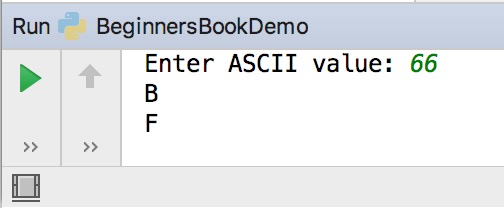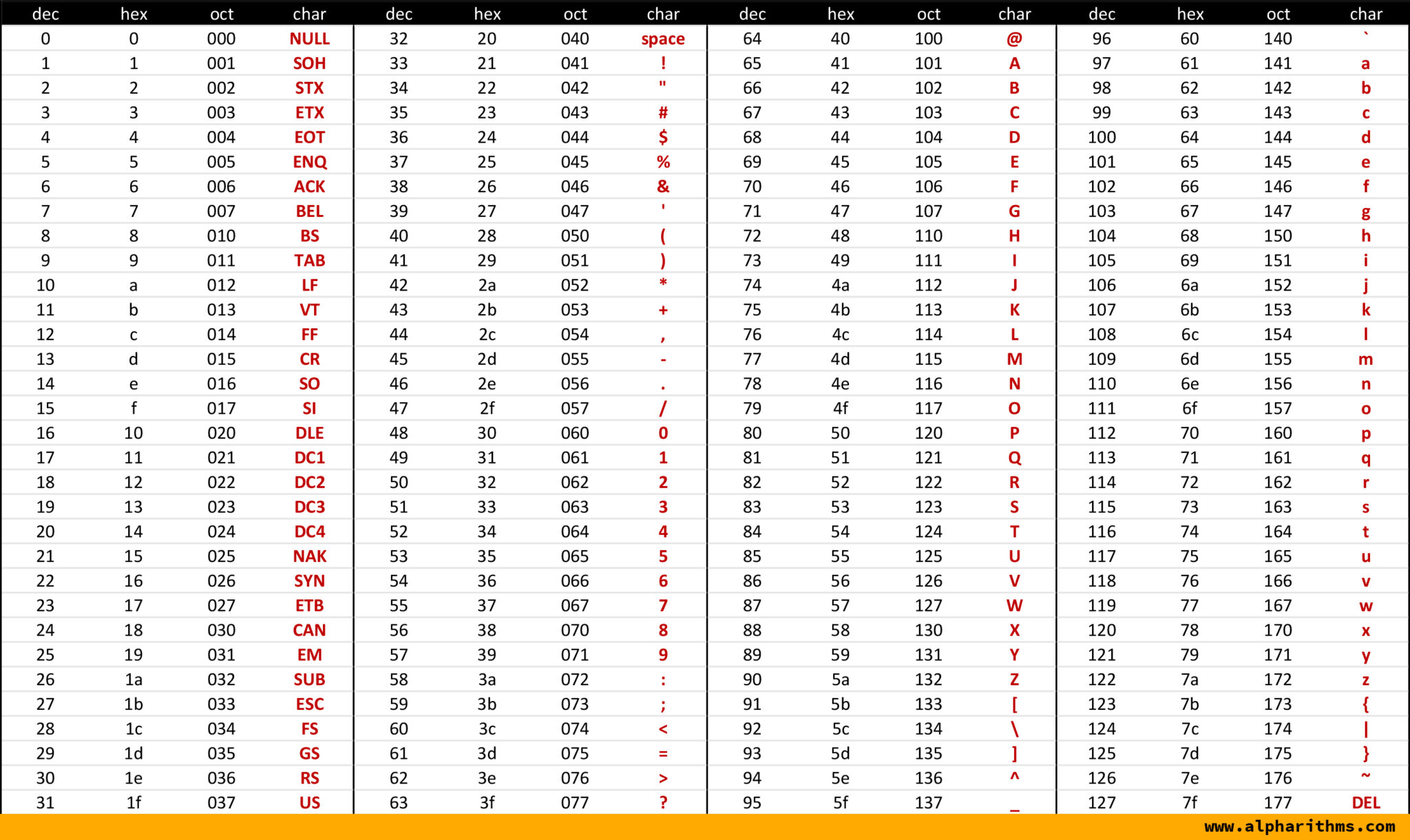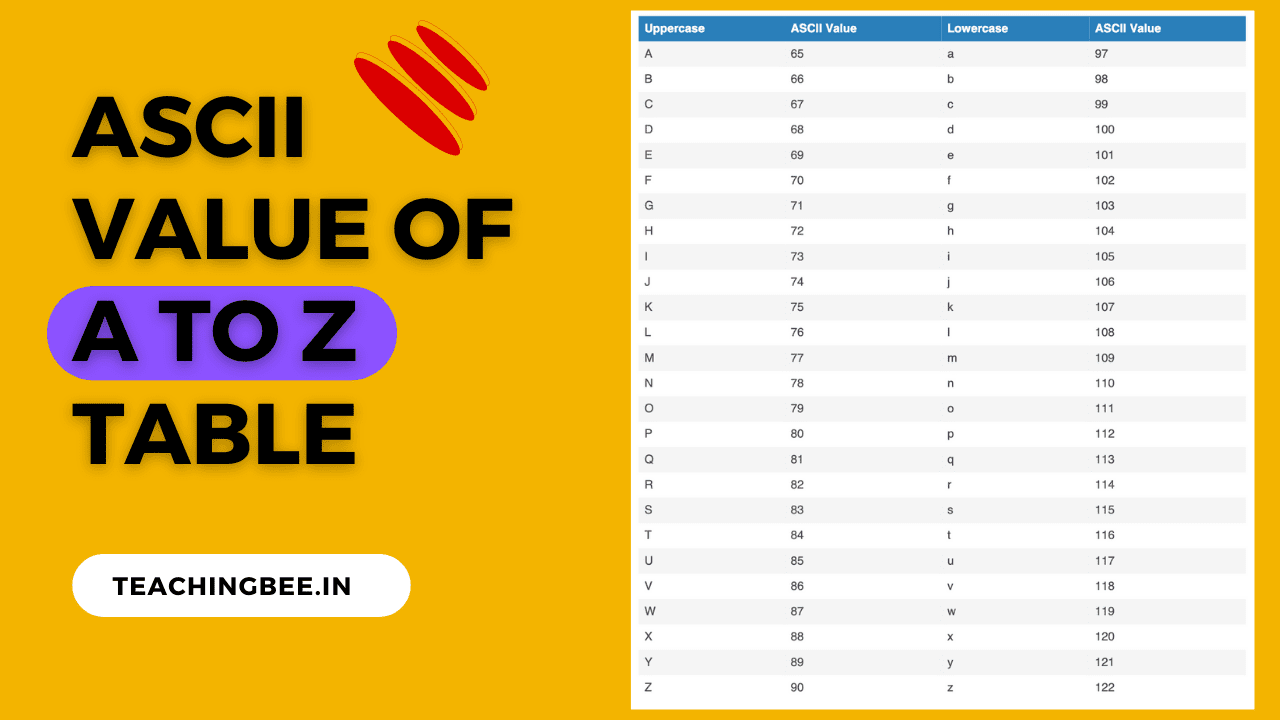Ascii Value Of A From the sed man page Normally sed cyclically copies a line of input not including its terminating newline character into a pattern space unless there is something left after a D function applies all of the commands with addresses that select that pattern space copies the pattern space to the standard output appending a newline and deletes the pattern
Java uses a multibyte encoding of Unicode characters The Unicode character set is a super set of ASCII So there can be characters in a Java string that do not belong to ASCII Such characters do not have an ASCII numeric value so asking how to get the ASCII numeric value of a Java character is unanswerable But why do you want to do this The ascii values of the Up key 224 72 Down key 224 80 Left key 224 75 Right key 224 77 Each of these has two integer values for ascii value because they are special keys as opposed to the code for which is simply 36
Ascii Value Of A

Ascii Value Of A
https://beginnersbook.com/wp-content/uploads/2019/03/Python_program_to_find_the_char_from_ascii_value.jpg

C Program To Find ASCII Value Of A Character
https://www.tutorialgateway.org/wp-content/uploads/C-ASCII-Value-of-a-Character-1.jpg

File ASCII Table wide svg Ascii Math Addition Worksheets Unicode
https://i.pinimg.com/originals/a3/50/f2/a350f274cc16aa636c767c4a63849f53.png
As others have pointed out ASCII only covers 128 characters including non printing characters Unicode includes ASCII as its first 128 characters for the purpose of backwards compatibility but it also includes far more characters To get only ASCII character codes as integers you can do the following How can I get the ascii character of a given ascii code e g I m looking for a method that given the code 65 would return A Thanks
It s feasible for a compiler to use a different value In fact if the host character set is not a superset of ASCII e g if it s EBCDIC then n will almost certainly not be LF So in C and C r is literally a carriage return n is a magic value that gets translated in text mode at run time to from the host platform s newline semantics It was commonly used as page separators but now is also used as section separators Text editors can use this character when you insert a page break This is commonly escaped as f abbreviated FF and has ASCII value 12 or 0xC
More picture related to Ascii Value Of A

File AscII 0 png NearWiki
http://nearbus.net/wiki/images/1/1f/AscII_0.png

Blogsmoms Blog
http://www.roseindia.net/jsp/simple-jsp-example/table-12.gif

Understanding The ASCII Table
https://linuxhandbook.com/content/images/size/w1000/2023/01/2.png
ASCII includes definitions for 128 characters Their indexes are all positive or zero You re seeing this negative value because the character is from an Extended ASCII set and is too large to fit into the char literal The value therefore overflows into the bit of your char signed on your system apparently that defines negativeness Andrew ASCII is a subset of Unicode so it s actually the same in this case Actually Unicode is not an encoding and ASCII is so in that sense they are different But for the purposes of charCodeAt there s no difference
[desc-10] [desc-11]

Tableau ASCII
https://kenanhancer.com/wp-content/uploads/2020/09/Screenshot-2020-09-17-at-21.18.37.png

Tablica ASCII
https://www.alpharithms.com/wp-content/uploads/340/ascii-table-alpharithms-2048x1220.jpg

https://stackoverflow.com › questions
From the sed man page Normally sed cyclically copies a line of input not including its terminating newline character into a pattern space unless there is something left after a D function applies all of the commands with addresses that select that pattern space copies the pattern space to the standard output appending a newline and deletes the pattern

https://stackoverflow.com › questions
Java uses a multibyte encoding of Unicode characters The Unicode character set is a super set of ASCII So there can be characters in a Java string that do not belong to ASCII Such characters do not have an ASCII numeric value so asking how to get the ASCII numeric value of a Java character is unanswerable But why do you want to do this

ASCII Character Set

Tableau ASCII

O Code Ascii

Ascii Table Python

Ascii Table Cs50

Python ASCII Code Table

Python ASCII Code Table

Ascii Personagem Valor Png Transparente Gr tis

Ascii Python

Printable Ascii Chart
Ascii Value Of A - How can I get the ascii character of a given ascii code e g I m looking for a method that given the code 65 would return A Thanks